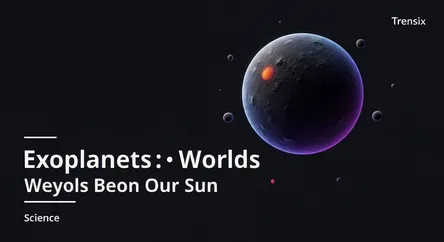Science
Exoplanets: Worlds Beyond Our Sun

Discover exoplanets—planets orbiting stars beyond our sun. Learn why these distant worlds are a hot topic in space exploration and the search for life.
What is it?
An exoplanet, or extrasolar planet, is a planet orbiting a star outside our solar system. Since the 1990s, thousands have been found, revealing an incredible diversity of worlds. They range from massive gas giants called "Hot Jupiters" that orbit extremely close to their stars, to rocky "Super-Earths" and even Earth-sized planets. Scientists primarily use the transit method (detecting a star's dimming as a planet passes in front) and the radial velocity method (measuring a star's "wobble" from a planet's gravity) to locate these distant objects across the galaxy.
Why is it trending?
Exoplanets are trending thanks to powerful observatories like the James Webb Space Telescope (JWST). JWST can analyze the atmospheres of these distant worlds, searching for biosignatures—gases like oxygen or methane that could indicate life. Discoveries of planets within the "habitable zone" of their star, where liquid water could exist, continuously make headlines. Each new finding from missions like TESS and JWST fuels excitement, bringing us closer to answering the profound question of whether we are alone in the universe.
How does it affect people?
The study of exoplanets expands humanity's cosmic perspective, showing that planets are common and increasing the probability of life elsewhere. This field drives technological innovation in telescopes and data analysis, inspiring future scientists and engineers. For the public, exoplanets transform science fiction into reality, fueling a collective curiosity about the universe's vastness and our place within it. The quest to find another Earth captures the imagination, making us reflect on the endless possibilities that lie among the stars.